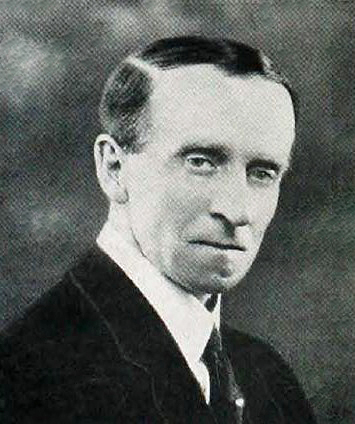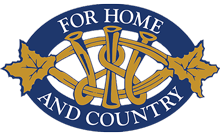What are the Tweedsmuir Community History Books?

Tweedsmuir Community History Books (or Tweedsmuirs as they are commonly known) uniquely capture and preserve local community history. They vary in form from a simple scrapbook to an elaborate series of volumes bound in leather, wood or a more formal blue-and-gold cover and are guided by the Tweedsmuir Manual. Tweedsmuirs are comprised of a variety of information and often include a history of the:
- Local Women's Institute Branch
- Earliest settlers in an area
- Agricultural practices and individual farms
- Industries that formed the basis of the local economy
- Social institutions and public buildings, such as churches, schools and community centers
- Local personalities, such as war veterans
- And much, much more!
The History of Tweedsmuir Books
The idea of WI members writing the histories of farms, buildings and places of interest at the local level began in the mid-1920s. In 1925, the Committee for Historical Research and Current Events was formed and suggested that more time be given to the study of local history in the hopes of gaining greater insight into the lives and thoughts of our ancestors.
By the mid-1930s, Lady Tweedsmuir, wife of Lord Tweedsmuir, Governor General of Canada, took a great interest in the Women's Institutes in this country. While at a meeting of the Athens Women's Institute, Lady Tweedsmuir stressed the need for preserving the history of our Canadian people. As an active WI member in England, she suggested that Ontario Women's Institute Branches follow the example of their English counterparts and keep detailed local history books.
In 1940, a recently widowed Lady Tweedsmuir was delighted to approve that these histories should be named after her late husband, thereby originating The Tweedsmuir Village History Books.
Documenting local history was seen as a fitting project to mark the upcoming fiftieth anniversary of the Women's Institute movement. Thus, a campaign was launched in 1945 encouraging every WI Branch in Ontario to prepare a history of their local community before the 1947 celebrations took place. This proved a popular project, and these local histories were officially named Tweedsmuir History Books in 1947.
A decade later the Provincial Board reported that 989 Branches across the province were compiling Tweedsmuir History Books. A great boost to these histories was the appointment of FWIO's first provincial Tweedsmuir History Curator in 1957, Mrs. R.C. Walker.
By 1964 Mrs. Walker reported that all levels of the organization had begun to take Tweedsmuir Books seriously, with well over 1,100 Branch histories recorded. She introduced Tweedsmuir Workshops to the volunteer curators across the province to teach the fundamentals of compiling local history books. To supplement these workshops, she released the first Tweedsmuir Manual in 1962. The Women's Institutes, writes Dr. Linda Ambrose in For Home and Country: The Centennial History of the Women's Institutes in Ontario, were the undisputed authorities in matters of local history, and in 1967 there was a real appetite for all the history they could serve up.
The Institutes' expertise in compiling local history was central to the centennial celebrations in most rural communities in 1967. Ethel Chapman, Editor of the Women's Institute publication Home and Country said: They are having a wonderful time. And they are teaching the younger generations Canada's history in a painless and delightful way.
Today, Tweedsmuir Books are officially called "Tweedsmuir Community History Books" and the Curators are called "Coordinators". Despite the name changes, Tweedsmuir books continue to be compiled by all levels of the Women’s Institute’s structure – Branch, District, Area and Province. While many are still in the homes of the Coordinators, others have been deposited in local archives, museums and other locations.
And now, many Tweedsmuir Collections and other WI documents have been digitized and made available free to the public through our Virtual Archives. The whole world can access the Tweedsmuirs online to conduct family research, learn about our rich communities, and discover the wonderful work that has been created by WI members.

